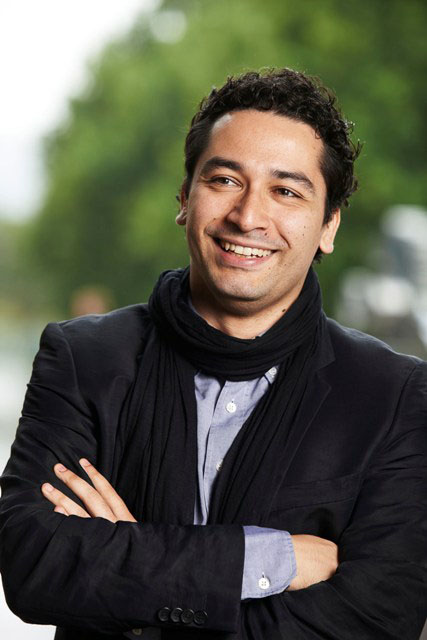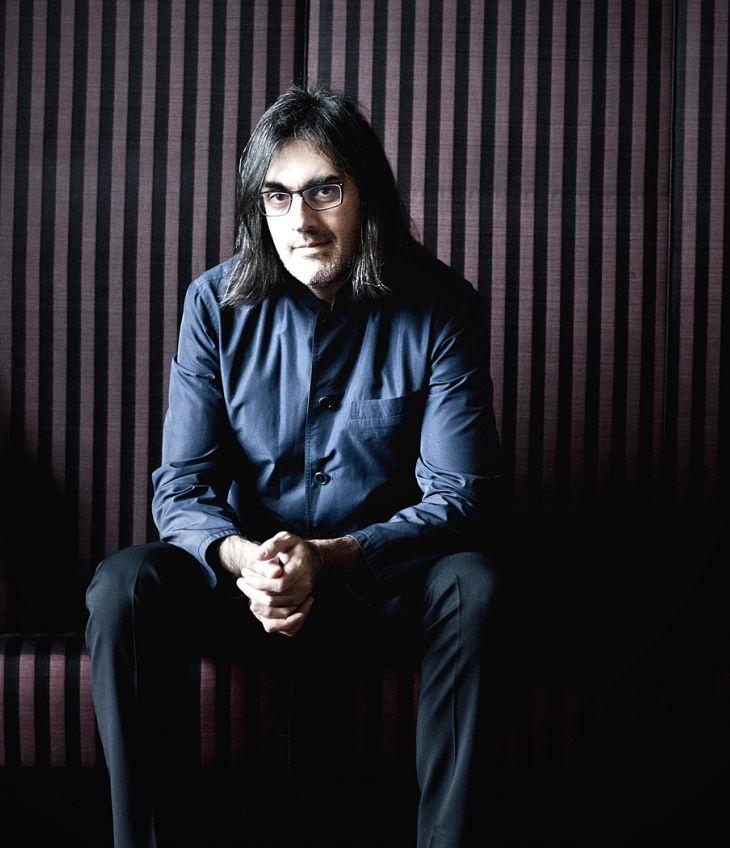After the rains, Houston Symphony strikes sparks with Stravinsky

Instead of starting with a bang, the Houston Symphony’s concert Saturday night at Jones Hall began with a whoosh.
The musicians sprinted into action with Scherzo fantastique, the whirlwind orchestral showpiece by the young Igor Stravinsky, and the group’s dash and vividness–spurred on by music director Andrés Orozco-Estrada–set the tone for the entire evening.
The concert marked the belated launch of the orchestra’s “Classical Series” for the season. Tropical-storm flooding forced cancellation of Thursday’s scheduled opening, but with two days for waters to recede, Houston’s roads were clear. And the orchestra was on steady ground with the Scherzo fantastique.
The quicksilver tone-painting launched an all-Stravinsky program that climaxed with the ballet score that made the Russian trailblazer famous: The Firebird. For concertgoers who weren’t familiar with the rarely played Scherzo, the performance may have supplied the missing link between Firebird and the 19th-century traditions it helped uproot.
Premiered a year before Firebird, the bee-inspired Scherzo fantastique anticipates a couple of the fairy-tale ballet’s most colorful sections–especially the glittering music that describes princesses playing with golden apples from a magic garden. The Houston Symphony’s strings breezed through the breezy, swirling lines while the winds and brasses tossed off their melodies and byplay crisply; a glance or flick of the hand from Orozco-Estrada was all it took to prod this or that group of players to spring into the race.
While Stravinsky’s Violin Concerto didn’t call on the orchestra to deliver such virtuosity, the spirited, wry music invited Orozco-Estrada and the group to amp up their brashness. But they above all dovetailed with the vigor and songfulness that violinist Leonidas Kavakos brought to the solo part.

Leonidas Kavakos
In a video interview shown before the concerto, Kavakos pointed out that the work, created two decades after The Firebird, was partly an homage to J.S. Bach. Stravinsky had a special fondness for Bach’s Concerto for Two Violins, and some of the concerto’s solo writing–such as long stretches of double stops–looks back to that baroque predecessor.
Kavakos evidently took his lead Saturday from Bach’s dynamism. He swept through the opening “Toccata” and final “Capriccio” with vigor, nimbleness and dashes of pungency, but he also slipped in a few graceful individual turns. The orchestra’s new concertmaster, Yoonshin Song, added her own agility to Kavakos’ in their brief, bracing duet in the “Capriccio.”
The soloist began “Aria I” with a gliding, poised lyricism, but as the solo line grew more and more hyperactive–culminating in a couple of crashing chords–he gave it a manic edge. In “Aria II,” which behaves more like a traditional aria, Kavakos spun out the melody with a shapeliness and glowing tone that would have been equally at home in Brahms or Tchaikovsky. Yet the music unfolded with a naturalness that kept it from sounding like Kavakos was dousing Stravinsky with syrup.
Even though the string section was scaled down by a few players, Orozco-Estrada and the orchestra added their own share of high spirits, thanks to their general briskness and bite as well as special doses of flashiness from the brass.
All that evidently limbered up the orchestra for The Firebird. The group played Stravinsky’s ballet score with an alertness, subtlety, and vigor that put across its storytelling even sans dancers.
At the outset, the low strings’ deep-rooted, sepulchral tone made for powerful scene-setting. The orchestra’s dynamism captured the Firebird’s agitation at its first appearance, pursued by the prince, and the group’s deftness conjured up the charm of the princesses cavorting with the golden apples.
The oboe’s sweetness brought a different charm to the princesses’ Round Dance, and as the rest of the orchestra added its silkiness, Orozco-Estrada set a flowing pace that helped the music blossom. When the evil Kashchey’s magic carillon sounded, the tubular bells at first drowned out everything else, but the sonic barrage gradually took shape. As the climactic scene unfolded, players out in the auditorium–four tenor tubas amid the main-floor audience, for instance–added surround-sound impact.
The orchestra unleashed the full force of its walloping attacks and blazing tone in the “Infernal Dance.” Even though Orozco-Estrada generally unleashed the orchestra’s heft simply through the decisiveness of his gestures, at the very end of the “Infernal Dance” his vigor led him to fleetingly face part way toward the audience. Some in the audience took that as a cue to clap.
In the “Berceuse,” depicting the Firebird lulling Kashchey and his henchman to sleep, the solo bassoon’s muted tone lent the melody a somber dignity, and the strings enhanced through their own quiet stateliness. Orozco-Estrada unleashed an orchestral bombshell to give Kashchey and company the coup de grace. Then the orchestra’s glowing, pealing tone gradually welled up, taking the ballet to a majestic finish.
Andrés Orozco-Estrada conducts the Houston Symphony in George Gershwin’s Concerto in F (with pianist Jean-Yves Thibaudet) and Catfish Row, Carlos Chavez’s Symphony No. 2, and Aaron Copland’s El Salón México at 8 p.m. Friday and Saturday and 2:30 p.m. Sept. 29 in Jones Hall. houstonsymphony.org; 713-224-7575.


